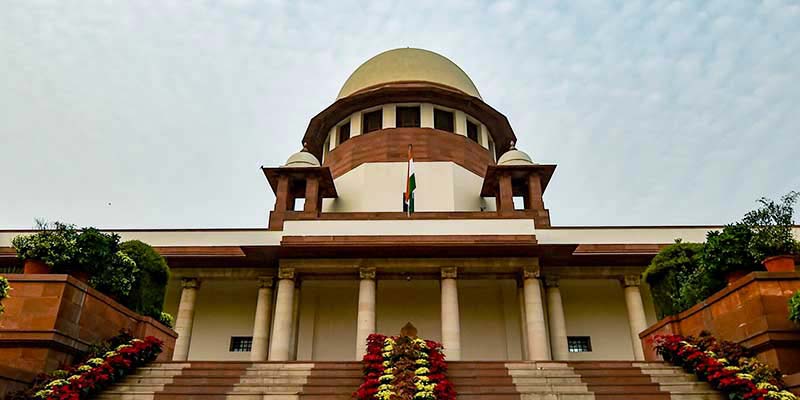- India
- Jan 29
PM Modi inaugurates diamond jubilee celebrations of the Supreme Court
• Prime Minister Narendra Modi inaugurated the diamond jubilee celebrations of the Supreme Court of India on January 28. He also launched citizen-centric information and technology initiatives that include Digital Supreme Court Reports, Digital Courts 2.0 and a new website of the Supreme Court.
• The Digital Supreme Court Reports (SCR) will make Supreme Court judgments available to the citizens of the country free of cost and in electronic format. The key features of digital SCR are that all 519 volumes of the Supreme Court reports since 1950, covering 36,308 cases, shall be available in a digital format, bookmarked, in a user-friendly manner.
• Digital Courts 2.0 application is a recent initiative under the e-Courts project to make court records available to the judges of the district courts in electronic form. This is coupled with the use of artificial intelligence (AI) for transcribing speech to text on a real-time basis.
Supreme Court
• The Supreme Court is the apex judicial body under the Constitution of India.
• Article 124 of the Constitution states that “there shall be a Supreme Court of India”.
• The Supreme Court came into existence on January 26, 1950 with the coming into force of the Constitution.
• On January 28, 1950, two days after India became a Sovereign Democratic Republic, the Supreme Court was inaugurated. The inauguration took place in the Chamber of Princes in the old Parliament building.
• On August 4, 1958, it moved to the present building located on Tilak Marg, New Delhi.
• The original Constitution of 1950 envisaged a Supreme Court with a Chief Justice and seven puisne judges, leaving it to the Parliament to increase this number.
• In the early years, all the judges of the Supreme Court sat together to hear the cases presented before them.
• As the work of the Court increased and arrears of cases began to accumulate, the Parliament increased the number of judges from eight in 1950 to 11 in 1956, 14 in 1960, 18 in 1978, 26 in 1986, 31 in 2009 and 34 in 2019 (current strength).
• As the number of judges has increased, they sit in smaller benches of two and three, coming together in larger benches of five and more only when required to do so.
• The Supreme Court comprises the Chief Justice and not more than 33 other judges appointed by the President of India.
Appointment of SC judges
• The CJI and judges of the Supreme Court are appointed by the President under clause (2) of Article 124 of the Constitution.
• In order to be appointed as a judge of the Supreme Court, a person must be a citizen of India and must have been, for at least five years, a judge of a High Court or of two or more such courts in succession, or an advocate of a High Court or of two or more such courts in succession for at least 10 years or he must be, in the opinion of the President, a distinguished jurist.
• Provisions exist for the appointment of a judge of a High Court as an ad-hoc judge of the Supreme Court and for retired Judges of the Supreme Court or High Courts to sit and act as judges of that court.
• Whenever a vacancy is expected to arise in the office of a judge of the Supreme Court, the CJI will initiate a proposal and forward his recommendation to the law minister to fill up the vacancy.
• The opinion of the CJI for appointment of a judge of the Supreme Court should be formed in consultation with a collegium of the four senior-most judges of the apex court.
• The opinion of members of the collegium in respect of each of the recommendations as well as the senior-most judge in the Supreme Court from the High Court from which a prospective candidate comes, would be made in writing. The CJI must transmit his opinion as also the opinion of all concerned to the government of India as part of record.
• After receipt of the final recommendation of the CJI, the law minister will put up the recommendations to the Prime Minister, who will advise the President in the matter of appointment.
• Supreme Court judges retire upon attaining the age of 65 years.
Removal of SC judges
• The Constitution seeks to ensure the independence of Supreme Court judges in various ways.
• A judge of the Supreme Court cannot be removed from office except by an order of the President passed after an address in each House of Parliament supported by a majority of the total membership of that House and by a majority of not less than two-thirds of members present and voting, and presented to the President in the same Session for such removal on the ground of proved misbehaviour or incapacity.
• A person who has been a judge of the Supreme Court is debarred from practising in any court of law or before any other authority in India.
Manorama Yearbook app is now available on Google Play Store and iOS App Store

